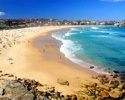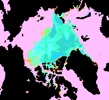An excellent, thought-provoking article by Mark Lynas in yesterday’s Guardian [UK] examines the greening of the High Street that is transforming British shopping. Lynas points out many of the inconsistencies inherent in green consumerism, and then asks the big question:
At the heart of green consumerism lies a single unanswered question: can ever-increasing resource consumption be truly reconciled with the ecological constraints of a fragile planet?
Tesco supermarket boss Terry Leahy thinks so, and is making his company as green as a supermarket can be, but this doesn’t impress some environmentalists. George Monbiot, ever the master of the pithy phrase, sums it up:
“No political challenge can be met by shopping.




